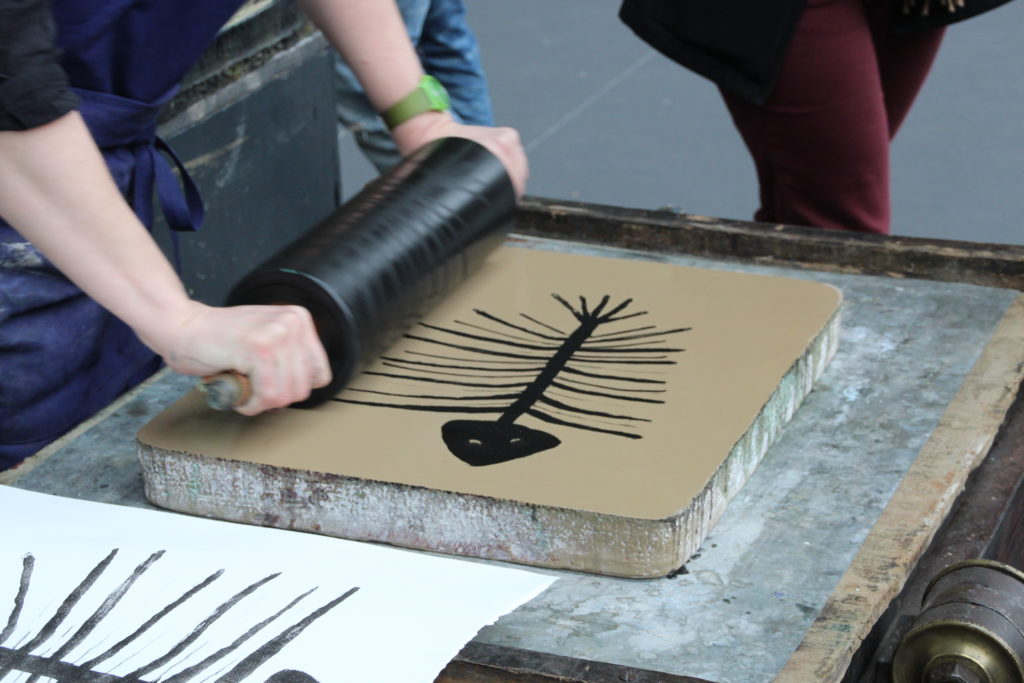
Lithography

Lithography (from Greek lithos: stone, graphos: to draw) is a planographic printing process using limestone as the basis of the artist’s drawing or painting.
The artist draws on the smooth finely grained surface of a porous limestone with a greasy crayon or tusche. The stone is then placed in a special lithographic press and treated with an ‘etch’ consisting of gum Arabic mixed with a very small amount of acid. The acid hardens the grease in the drawing, bonding it to the porous stone and the gum Arabic makes the non-greasy parts of the stone receptive to water.
When printing, the stone’s surface is dampened with a sponge before the colour is rolled over the entire plate. The ink only sticks to the greasy areas where the stone was drawn or painted on and it is repelled by the water on the rest of the stone. The stone is kept moist during the printing process. The paper is placed directly on the stone and both are run through the press. A multi-coloured lithography is build up by several layers of printing; one stone is used for each colour.
A lithographic print has characteristics that can resemble pencil and crayon drawings as well as watercolour and gouache. Lithography is not a technique we offer at the print studio.
Image: Inking a lithographic stone at antiquarian book and print fair in 2013 at the Grand Palais in Paris, France. Photo: Lionel Allorge via Wikimedia Commons